This itinerary can be customized with any activities for any duration.
You can always choose to do a part of the Trans Bhutan Trail.
The Trans Bhutan Trail is a historical and cultural trekking route that spans the entire length of Bhutan, from the eastern border to the western border. It has recently been revived and reopened to the public after being closed for centuries. The trail stretches approximately 400 kilometers (about 250 miles) and offers trekkers a unique opportunity to experience Bhutan’s diverse landscapes, cultural heritage, and spiritual traditions.
The Trans Bhutan Trail has been used for centuries by Bhutanese people, primarily as a trade and pilgrimage route. It was vital for connecting remote communities across the country, linking towns, monasteries, and significant cultural sites. However, it fell into disuse in the 1960s due to road construction and modern infrastructure development. In 2021, the Bhutan government, in partnership with organizations like the Bhutan Ecological Society, decided to revive and promote the trail as a means to support sustainable tourism and preserve the country’s heritage.
The trail spans from the Western to the Eastern border of Bhutan, connecting the towns of Haa Valley (in the west) to Trashigang (in the east). The journey is typically divided into several sections, each offering a variety of experiences.
Details about the package
What's included
- All meals (Breakfast, lunch and dinner)
Lunches may be provided in other tourist Restaurants or picnic lunches in certain cases (While on tour). During Trek, all lunches shall be packed lunch. - Accommodations;
While on Tour accommodation shall be provided in a minimum 3 star hotel, farm House, etc. Tented accommodation shall be provided during trek.
- Certified, English speaking guide throughout the tour and trek
Language Guides may be available at an additional cost, however this shall entirely depend upon the requirements confirmed at the time of booking - Exclusive vehicle for all transfers as per the group size
- Entrance fees for museums and monuments
- Sustainable development fund
Indian Nationals – INR 1200 per person per night
Others – USD 100 per person per night - USD 40 Visa Fee (for travelers other than Indian Nationals)
- Other govt taxes applicable
- Sleeping tents, sleeping mats & pillows.
- Dinning tents, kitchen tent & toilet tent.
- Tables, chairs, utensils, hot water bags.
- Trekking Chef and Assistants.
- Horses/ yaks to carry trekking equipments and food supplies.
- Cost related to planning and confirming your trip to Bhutan excluding the cost not within our premises. Additional Cost may be applicable in certain cases.
Complimentary
- Assistance with Bhutan Travel Info
- Guidance in planning your Bhutan tour
- Drinking water during the tour
- A traditional cultural show
- Hot stone bath in a village house
- National dress and Archery experience
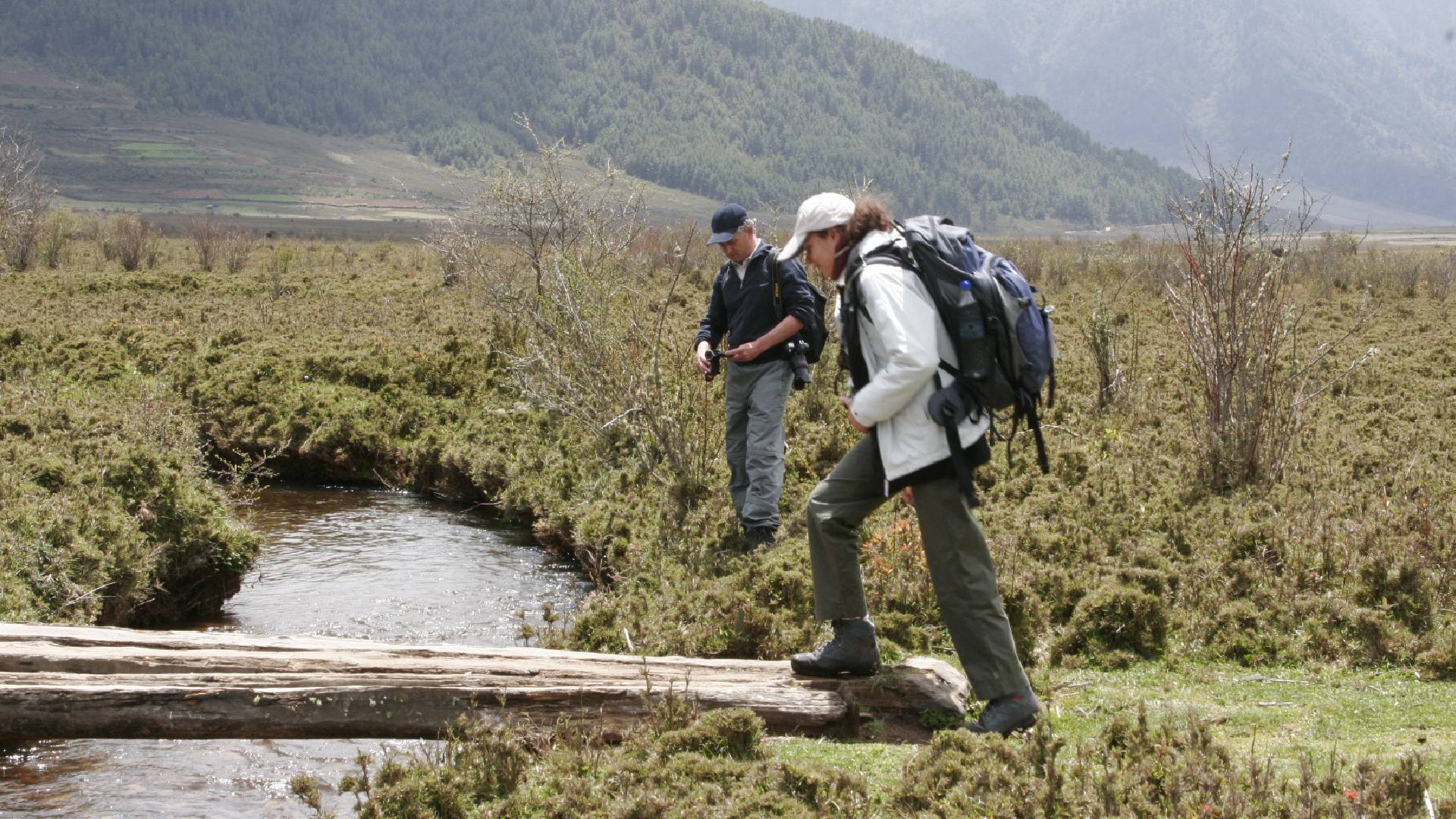
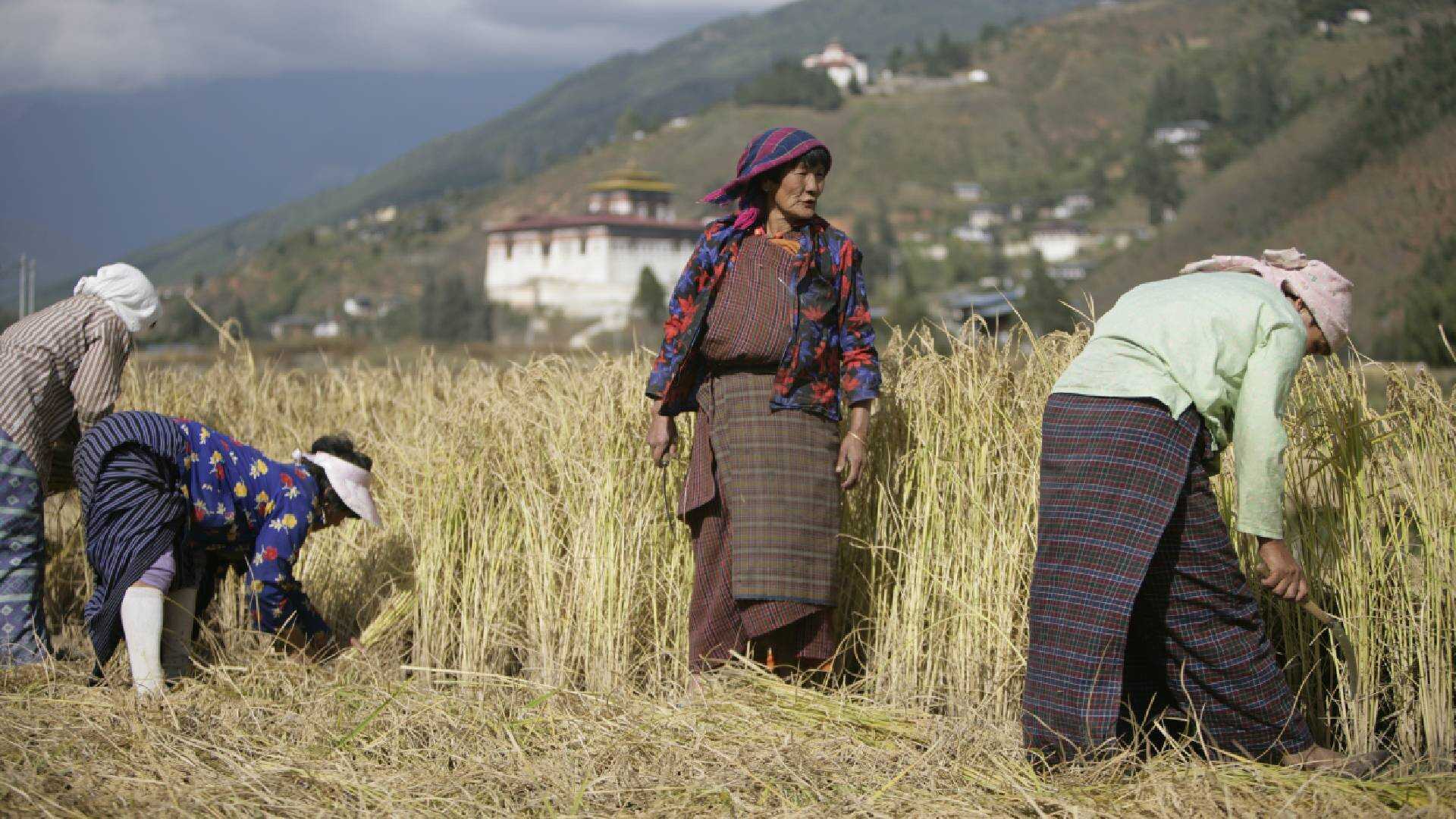

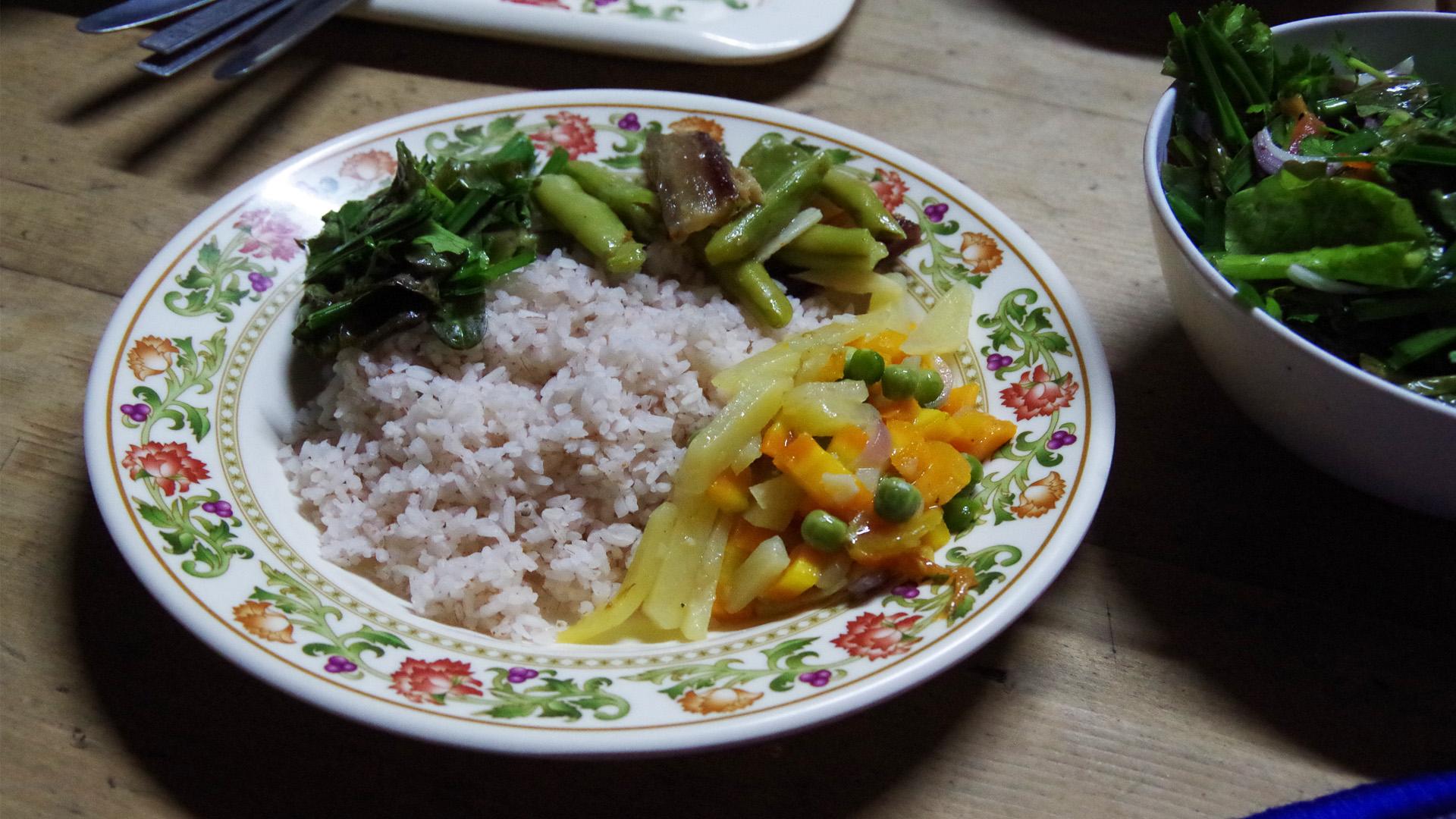
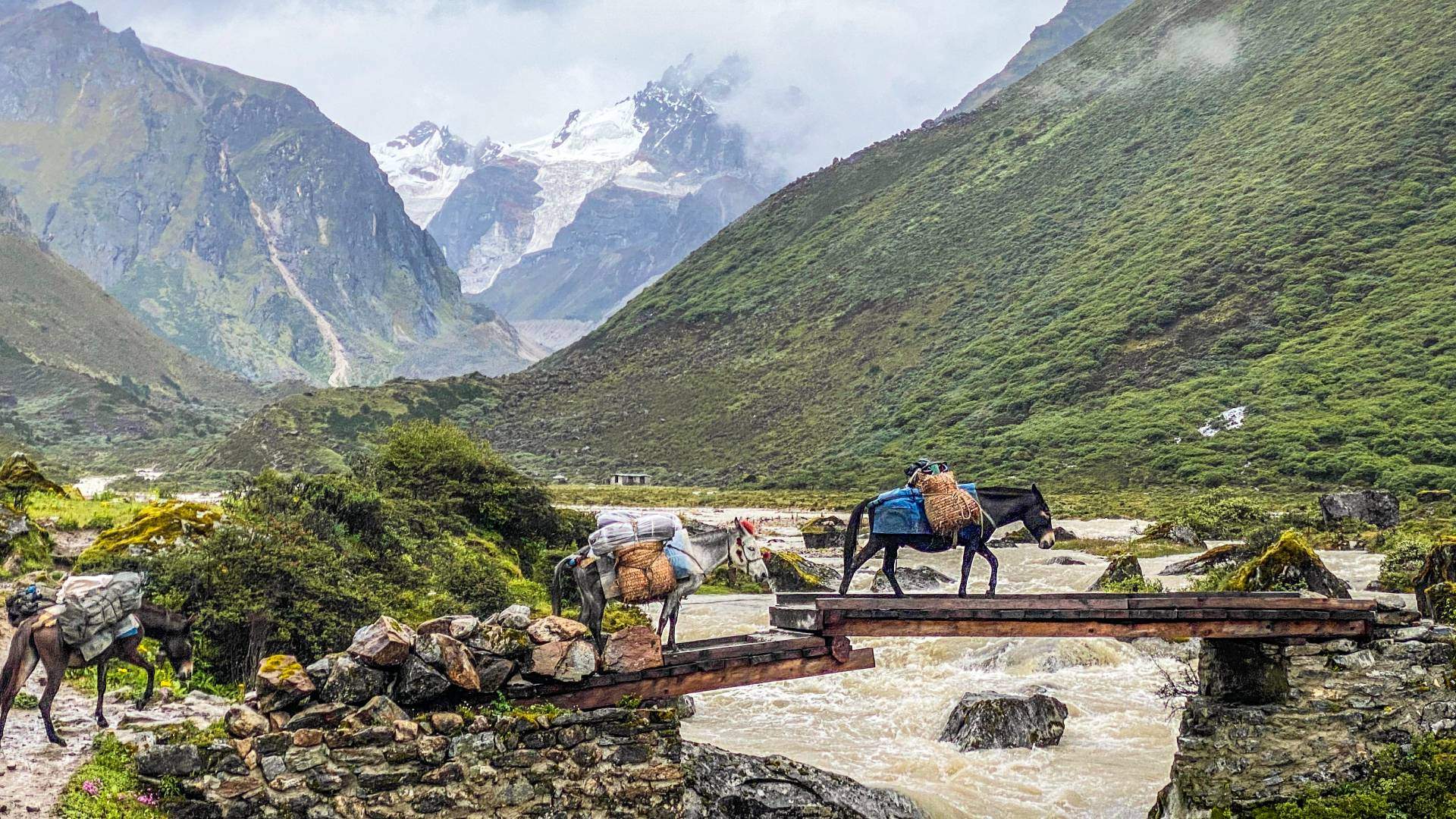


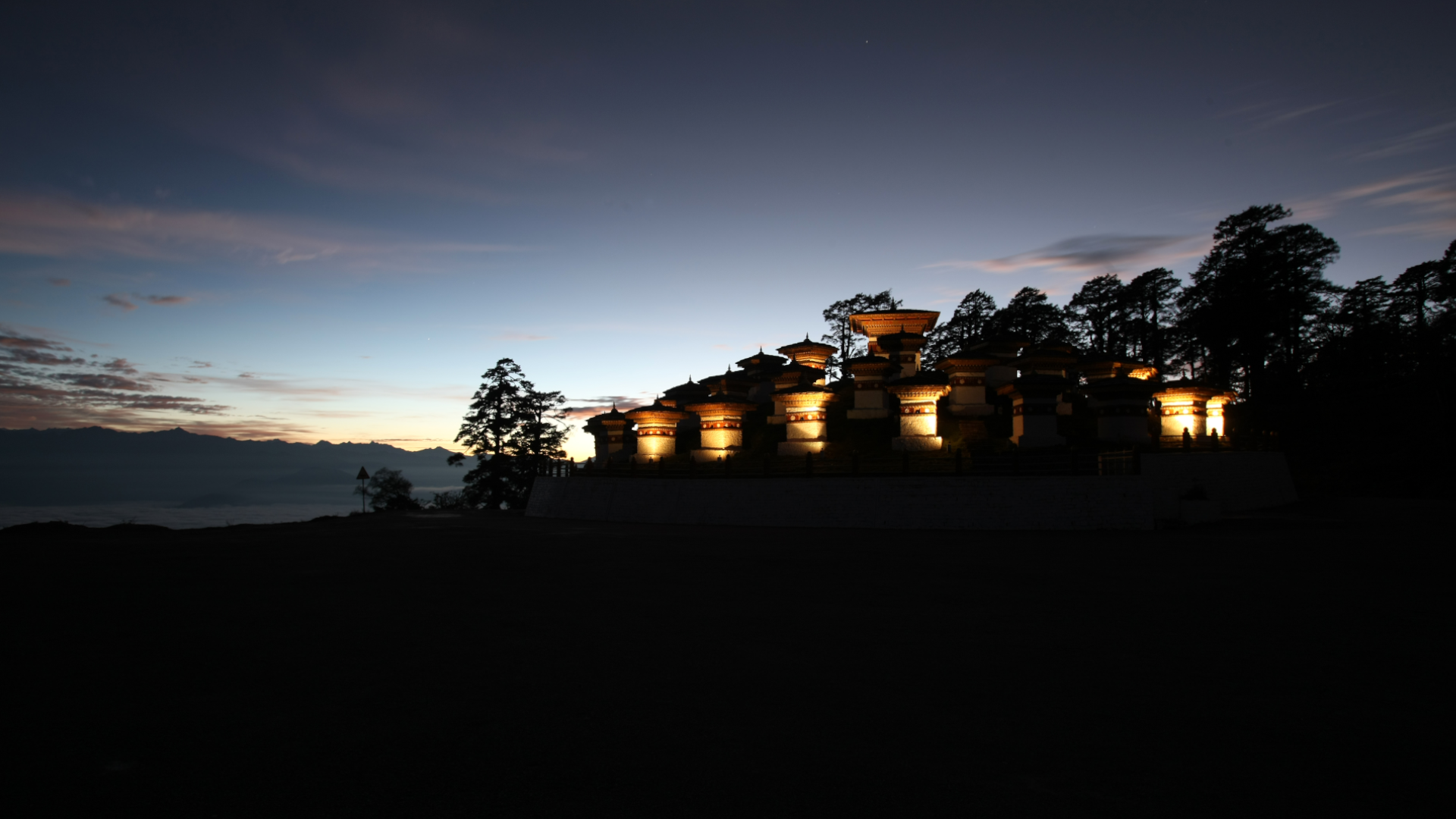
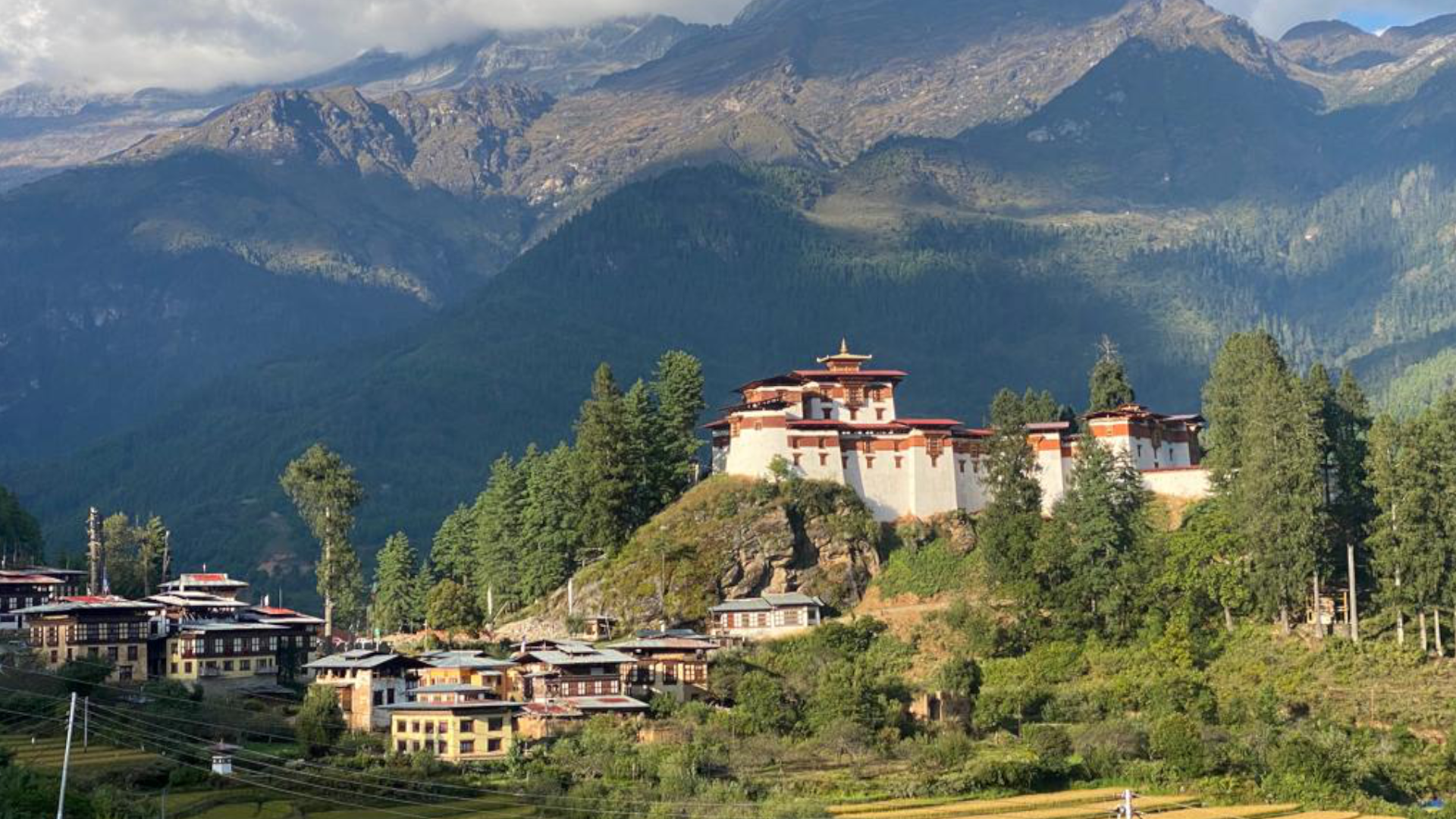
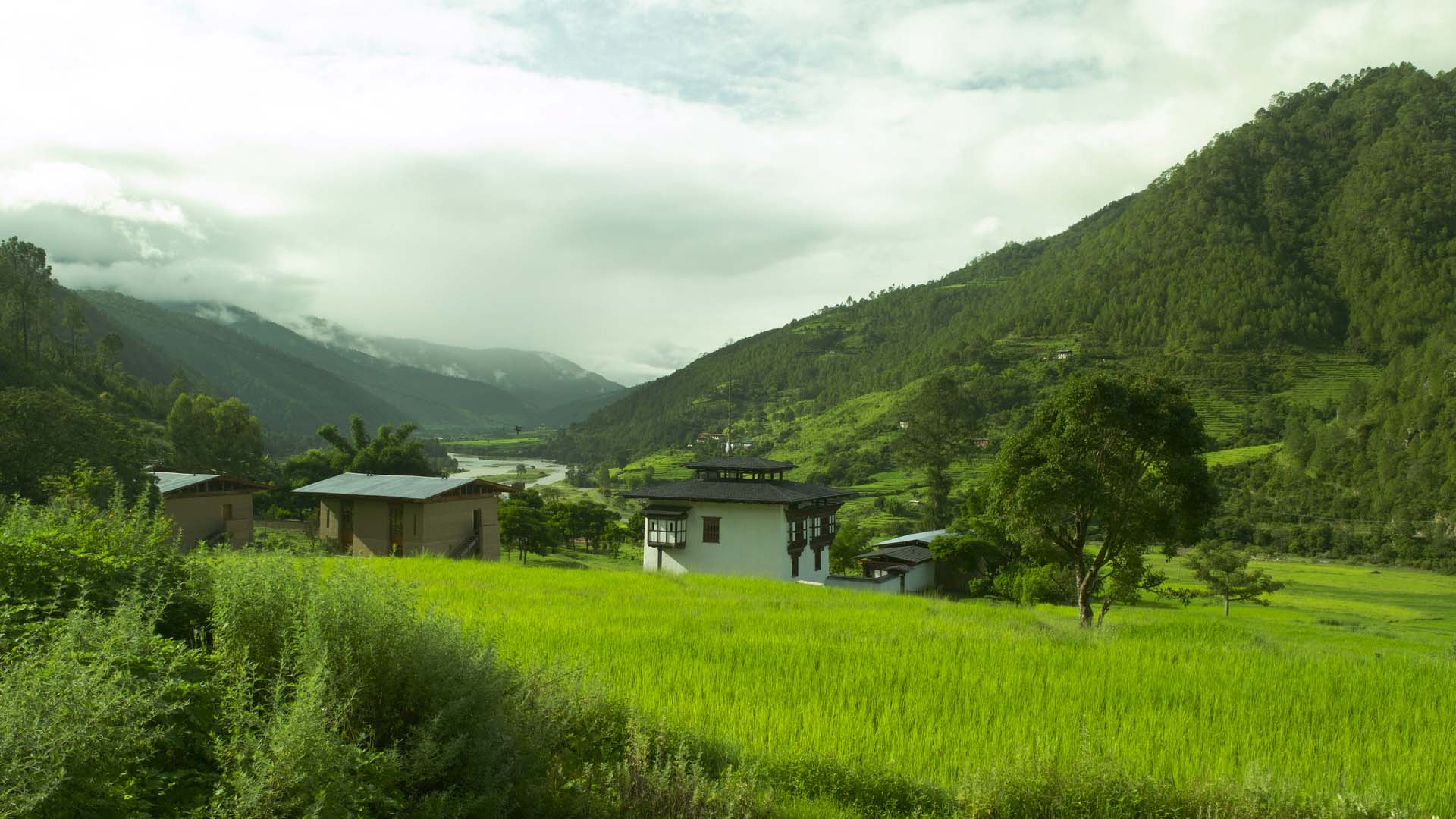
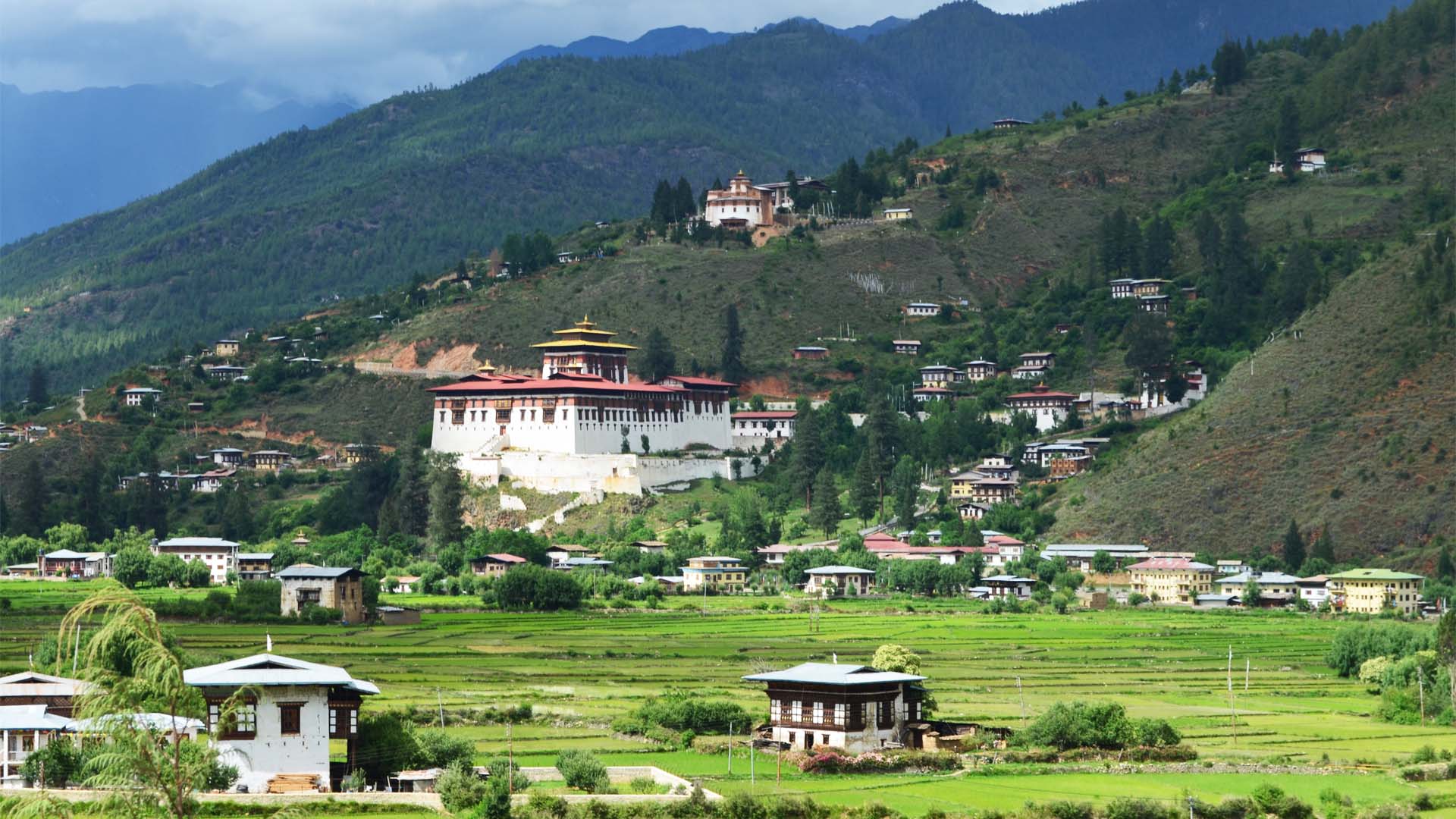
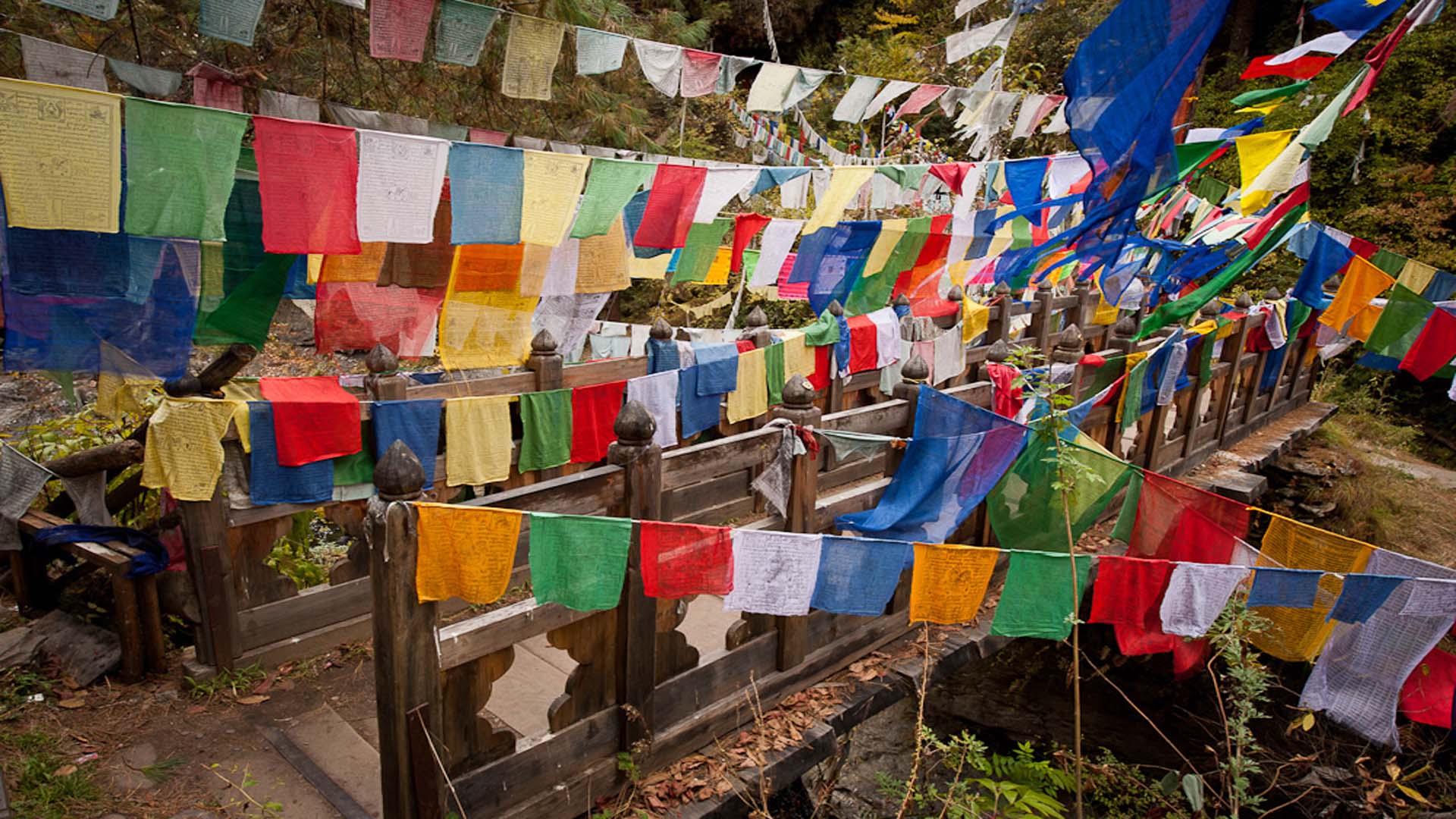
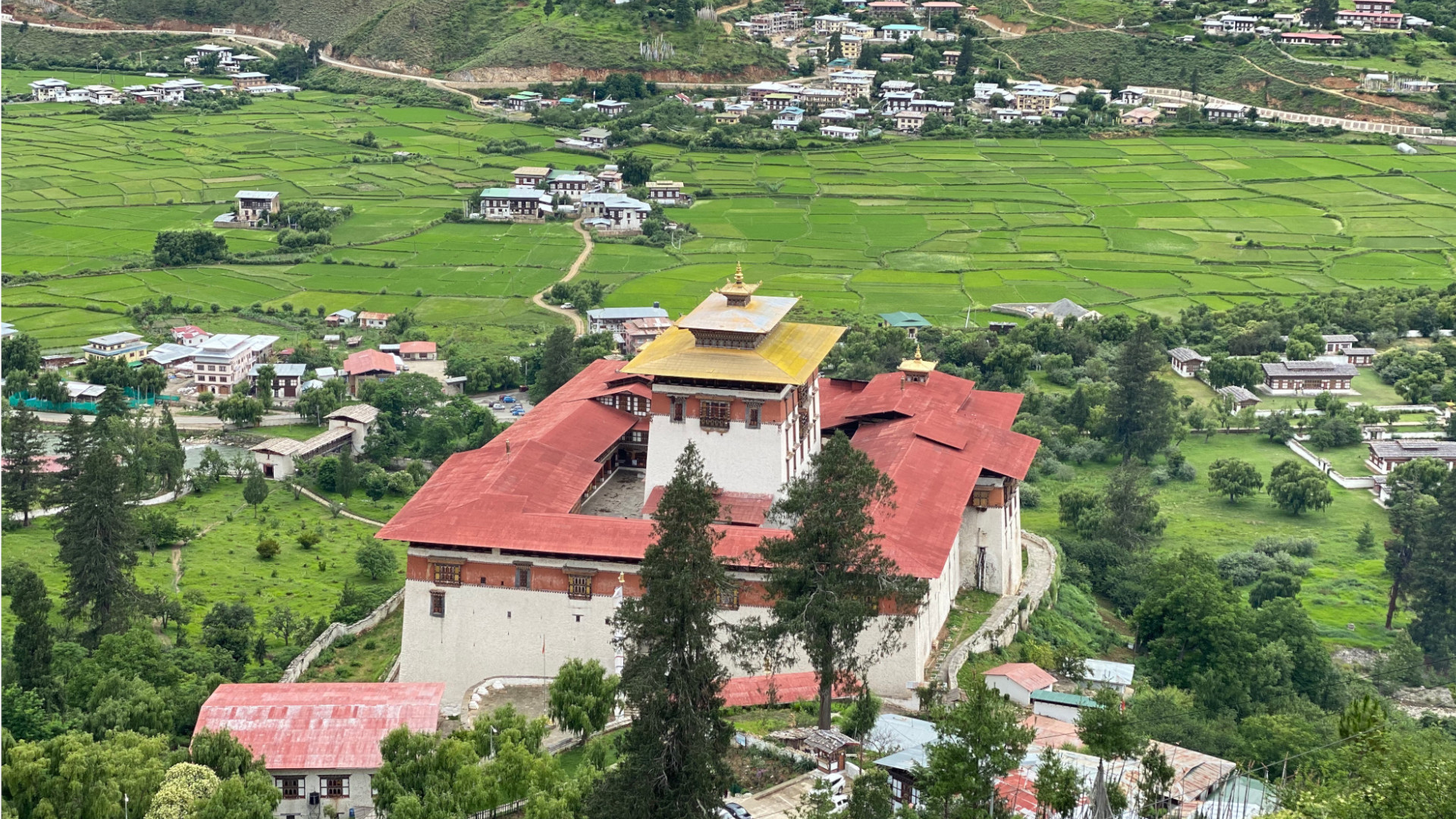
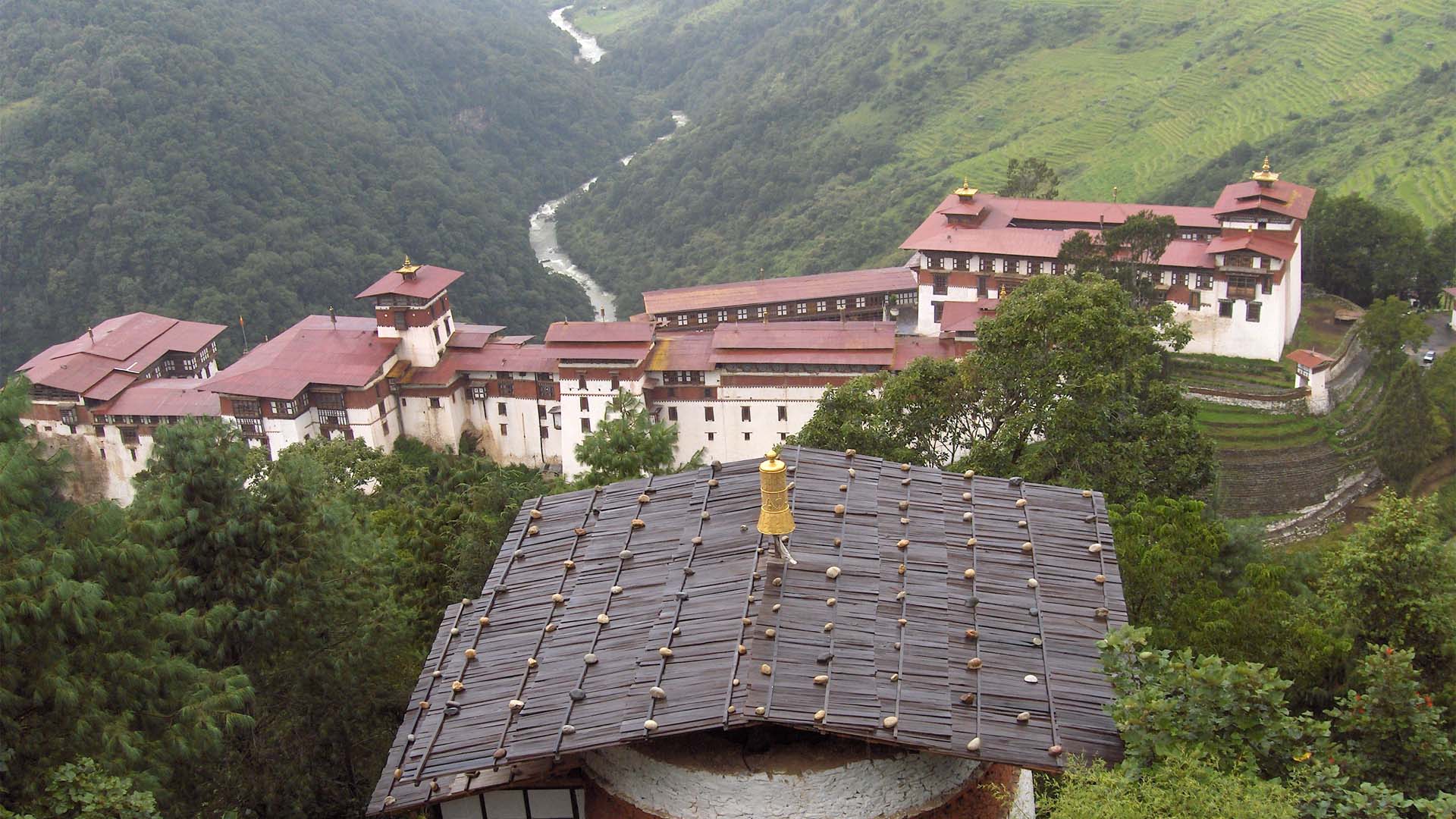
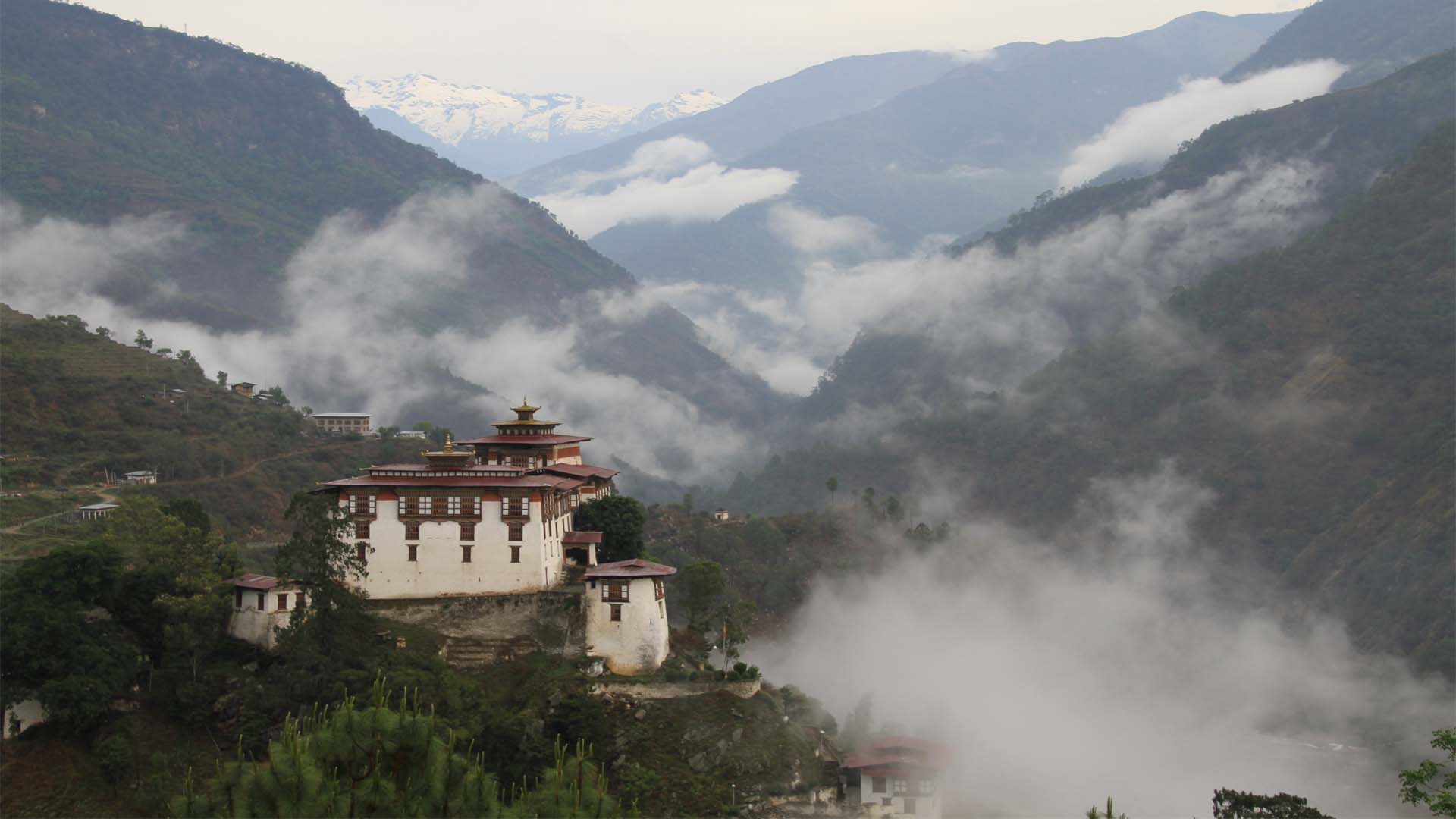
- Historic Path: Walk along the same route used by royals, monks, and traders for centuries.
- Scenic Beauty: Traverse high mountain passes, lush river valleys, and picturesque villages.
- Cultural Immersion: Experience traditional rural life, ancient cultural sights, and local customs.
- Iconic Sites: Visit Taktsang Monastery (Tiger’s Nest), Punakha Dzong, and other significant landmarks.
- Adventure: Engage in activities like hiking, biking, rafting, and kayaking.
- Community Impact: Your journey supports local communities and conservation efforts.
- Personalized attention: all details are taken care.
- Trip Rating: Depends on duration and routes
- Travel Type: History, Nature, Culture, Walks, Hikes, Local Interactions & Experiences, Sights & Monuments
- Arrival: Paro international Airport
- Departure: Paro International Airport
- Duration: 33 Nights, 34 Days (Customizable)
- Destinations: Western, Central and Eastern Bhutan.
- Possible Departures: Throughout the year, Best in Spring and Autumn
Travel Cost
Kindly write to us at idealtravelcreations@gmail.com for the travel cost as the cost varies for different months.
The cost does not include the following:
- All kinds of bank charges
- Single room supplement
- Personal expenses, such as phone, laundry, etc.
- Any form of insurance
- Any kinds of bottled drinks
- Flights fares – both domestic and international
- Gratitude and Tipping
- Extra activities such as rafting, cycling, horse ride
(if not included in the inclusion or complimentary) - All kinds of additional expenses due to unforeseen contingencies whether man-made of natural
- Anything not mentioned in the cost inclusion during the confirmation of the trip
Notes
- We reserve the right to change the itinerary or hotels anytime as may be required to, in case of unforeseen contingencies (natural/man made) or unavailability of hotels or any other services such as flights and transport.
- Some of the sites to be visited may be closed on government holidays or during breaks. In such cases we shall do other sightseeing in its place.
- This itinerary can be tailor made for any duration or within any destination and can be combined with any kind of activities such as trekking, rafting, walking tour, cycling , etc
- It is advisable to book tours in Bhutan at least 6 months prior to the travel date because of limited Bhutan tourism infrastructures and inventories.
- Except for the planning, guidance and information phase, all bookings are confirmed only after the receipt of the tour payment.
Cancellation Policies
- We shall charge a minimal amount of USD 30 as administrative charges for any bookings cancelled more than a month before the date of travel.
- 25% of the payment shall be charged as cancellation charges for any bookings cancelled within one month to 16 days from date of travel.
- 50% of the payment shall be charged as cancellation charges for any bookings cancelled within 15 days to 7 days from date of travel.
- 100% cancellation charges shall be applicable for any any bookings cancelled within 6 days from date of travel or no show
- Cancellation charges shall also depend upon the policies of the parties from whom we have taken the services such as hotels and airlines. The cancellation charges levied by the external parties shall be applicable incase it exceeds the amount as mentioned above in points 1 – 4.
Itinerary
The panoramic Himalayan views shall be mesmerizing as you fly to Bhutan. The Landing is another experience. Upon arrival you will be greeted by your Bhutanese Guide from Ideal Travel Creations before driving to your hotel in Paro. Check in and spend some time in the property settling into your new surroundings.
Afternoon, you shall be taken for your first foray into this Hidden Kingdom. This afternoon in the Paro Valley shall allow you to acclimatize to the air at this altitude, as well as getting yourself introduced to this Kingdom where you shall spend the next 10 days.
Visit the Paro Rinpung Dzong, a Buddhist monastery and fortress of the Drukpa Lineage of the Kagyu school in Paro. The Monastic body and government office of Paro is housed in this fortress and is listed as a tentative site in Bhutan’s Tentative List for UNESCO inclusion. Visit the Paro National Museum, which displays a collection of fascinating Bhutanese relics.
Spend your evening in the quaint setting of hotel. Dinner and overnight in the hotel.
ALTITUDE OF PARO: 2280 M
Note: The sightseeing and activities of day 1 is subject to flight timings.
Your Day starts with an early morning Hike to Taktshang Monastery, one of the most wonderful and significant monasteries in Bhutan. Also known as the Tiger’s Nest, the hike shall be accompanied with stories of Guru Rinpoche, who arrived on the spot where the monastery is located on the back of a flying tigress somewhere in 8th century. Reaching the top shall enlighten you on why the Monastery is an iconic pilgrimage for visitors to the Kingdom of Bhutan.
In the afternoon drive to the almost fully reconstructed Drukgyel Dzong. The original monument (destroyed by fire in 1951) was built by Zhabdrung to commemorate his victory against invading Tibetans in 1644. In fine weather the towering peak of the sacred Mount Jomolhari (7314m) appears as a stunning backdrop.
(If time permits) Visit Kyichhu Lhakhang, a 7th-century temple nearby with two magical orange trees that bear fruit throughout the year.
Drive back to the Hotel. Dinner and Overnight at the hotel.
ALTITUDE OF PARO: 2280 M
DRIVING DISTANCE: 70 KM | DRIVING TIME: 3 HR
Begin your day with a 2.5-hour drive from Paro to Haa, covering a distance of 70 kilometers. En route, traverse the Chele La Pass at 3,988 m and enjoy a majestic panorama of the Himalayan Ranges and the valley beyond. If the weather permits, you may even catch a stunning view of Bhutan’s second-highest peak, Mt. Jomolhari at 7,314 m.
Upon arrival in Haa, visit the historic Lhakhang Nagpo, also known as the Black Temple. With a history spanning 1300 years, it is among the oldest temples in the Haa Valley. Legend has it that the Tibetan king Songtsen Gampo released two pigeons, one black and one white, to find auspicious locations for new temples. The black pigeon landed here, while the white one settled at Lhakhang Kharpo (White Chapel). In the evening, explore the Haa Valley.
Dinner and overnight in hotel.
ALTITUDE OF HAA VALLEY: 2740 M
14 KM TREK | 6 – 7 HR | 895 M ASCENT | 1245 M DESCENT | HIGHEST POINT 3684 M
After breakfast, drive to Katsho Village. From here starts your trekking on the historic Trans Bhutan Trail. For generations, the people of Haa have used this route to trade with the Parops in the neighboring Paro Valley. They would exchange 20 drey (approximately 30 kilograms or 66 pounds) of Shakam (dried meat) for an equal weight of rice at Paro Tshongdu (the market), as the harsher climate in Haa is not suitable for rice cultivation.
The ancient trail follows the scenic Haa River, gently rising out of Katsho Valley, passing through yak pastures before entering forests of pine and rhododendron. As you trek through Katsho Valley, keep an eye out for the cliff-edge Bjungneydra Taktsang (also known as “The Mini Taktsang”) and the sky burial site at Kungkarpo. The trail continues to ascend until it reaches Kaleyla Pass, which lies on the ridge between Chelela and Sagala.
At Kaleyla, enjoy breathtaking views of the Himalayan range to the north. On clear days, you may catch sight of Mount Jhomolhari (7,326m/24,036ft), Mount Jichudrakey (6,662m/21,860ft), and Mount Tsherimgang (6,532m/21,431ft). A picnic lunch will be served at this stop.
From Kaleyla, the trail descends through rhododendron and bamboo forests into Paro Valley. The final few kilometers will be spent on tracks winding through traditional Bhutanese farming villages.
Upon arrival, check into your hotel. Your guide will then arrange dinner, either at the hotel or in a local restaurant.
ALTITUDE OF PARO: 2280 M
15 KM TREK | 7 – 8 HR | 758 M ASCENT | 301 M DESCENT | HIGHEST POINT 2830 M
After breakfast, start your trek with a gentle ascent from Lamgong Village, crossing the expansive rice paddies of the Paro Valley. It then curves around the northern ridge before descending into the charming village of Dopshari.
After lunch, embark on one final stretch of the trail, climbing up to Upper Dopshari (Damchenang), where you’ll be rewarded with stunning panoramic views over the Paro Valley.
Finally drive to hotel. Dinner and Overnight in Hotel.
ALTITUDE OF PARO: 2280 M
13 KM TREK | 7 – 8 HRS | 770 M ASCENT | 812 M DESCENT | HIGHEST POINT: 3473 M
After breakfast, rejoin the Trans Bhutan Trail and head east towards Tsalunang. The day’s trek begins with a climb from Upper Dopshari, passing through community-led reforestation projects, small farming villages, and into deep, lush forests alongside pristine rivers.
Enjoy a picnic lunch at the Jela Pass. Visit the Jela Dzong (fortress). This historic site marks the place where Zhabdrung Ngawang Namgyel is said to have encountered the protective deity Pal Yeshey Goenpo during his pilgrimage to Paro. The dzong’s main relics include statues of Du Sum Sangye (the Buddha of the Past, Present, and Future). According to legend, the Buddha statue, which originally faced north, miraculously turned southwest towards Paro.
From Jela, the trail descends gently into the Tsalunang Village, weaving through forests of blue pine and rhododendron. Birdwatching enthusiasts should keep a lookout for some of Bhutan’s stunning bird species that call this region home.
Dinner and over in Camp/ Village Home stay or Hotel.
TREK STARTING ALTITUDE: 2830 M
TREK END ALTITUDE: 2777 M
ALTITUDE OF THIMPHU; 2350 M
17.5 KM TREK | 7 – 8 HR | 1197 M ASCENT | 1373 M DESCENT | HIGHEST POINT: 3994 M
After breakfast, continue your trek towards Kuenselphodrang in the Bhutan’s capital city, Thimphu. Sitting at an altitude between 2248 m and 2648 m, Thimphu ranks as the fifth highest capital city in the world. It is also renowned for being the only capital city without traffic lights, offering a fascinating blend of modernity and Bhutanese tradition.
From Tsalunang, the trail ascends through enchanting forests of fir, blue pine, and dwarf rhododendron, and passes through yak pastures before reaching the Pumola Pass (3994 m) This is the highest point on the Trans Bhutan Trail. Historically, herders from Punakha brought their cattle here during summer to escape the valley’s heat.
Picnic lunch at Pumola enjoying spectacular mountain views. The trail then descends, meandering through serene meadows and offering breathtaking panoramas of the Thimphu Valley from a long, scenic ridge. Here, you’ll catch glimpses of your upcoming route stretching beyond Thimphu.
As the day winds down, you’ll arrive at Kuenselphodrang or Buddha Point, home to one of Thimphu’s most iconic landmarks—the Buddha Dordenma. This 51-meter gilded bronze statue, which watches over the Thimphu Valley, houses 125,000 miniature statues. Sitting atop a three-storey base with a chapel and countless donated statuette, it was commissioned to commemorate His Majesty the Fourth King of Bhutan, Jigme Singye Wangchuck, on his 60th birthday.
Drive to Hotel. Dinner and overnight in hotel.
TREK STARTING ALTITUDE: 2777 M
TREK END ALTITUIDE: 2609 M
ALTITUDE OF THIMPHU: 2350 M
20 KM TREK | 7 – 8 HR | 570 M ASCENT | 399 M DESCENT | HIGHEST POINT: 2780 M
After breakfast drive to Kuenselphodrang and rejoin the Trans Bhutan Trail. Before the construction of the National Highway, this section of the trail served as a vital thoroughfare, linking Thimphu with Punakha and the eastern regions of Bhutan. From Buddha Dordenma, begin your descent through the Debsi Valley. After crossing the river via the motor road bridge, follow the historic old east-west highway as it winds through the town of Babesa. Your destination is the Simtokha Dzong, a significant fortress built in 1629 by Zhabdrung Ngawang Namgyal. Simtokha Dzong is notable as the first dzong in Bhutan designed to accommodate both administrative and monastic functions. Today, it remains the oldest surviving dzong in its original form, renowned for its intricate murals, carvings, and tapestries, as well as its three-storey utse (central tower) and numerous chapels. From Simtokha, the trail begins a gradual ascent, passing through orchards, strawberry fields, and charming market gardens. Your hike concludes upon arrival in Hongtsho.
Drive to Hotel. Dinner and overnight in hotel.
TREK START ALTITUDE: 2609 M
TREK END ALTITUDE: 2780 M
12.5 KM TREK | 6 – 7 HR | 436 M ASCENT | 1404 M DESCENT | HIGHEST POINT: 3116 M
After breakfast, drive back to the start of trek where the trail winds through dense forests and open meadows. Your journey will lead you to Dochula Pass, standing at an impressive 3,116 m. In Bhutan, mountain passes are considered sacred, and it is customary to burn incense as an offering. You may also join the locals in hanging colorful prayer flags, a sign of respect to the gods.
For a truly unforgettable experience, we recommend starting early this morning. Dochula is renowned for its breathtaking sunrises, offering sweeping panoramic views of the Himalayan range on clear days as the sun rises over the distant peaks. Visit the 108 Druk Wangyal Chortens and als the Druk Wangyel Lhakhang. Explore the nearby meditation caves for a moment of quiet reflection.
After a brief rest at the Pass, continue your trek into the neighboring valley and join the historic ‘Divine Madman Trail’. This section of the trail follows the legendary path taken by Drukpa Kuenley, the Divine Madman, when he traveled from Tibet to Bhutan in the 16th century. Over the coming days, you’ll encounter several cultural landmarks and hear fascinating tales of Drukpa Kuenley’s extraordinary mission to suppress evil energies and spread his teachings.
Lunch at Lumitsawa before continuing your descent toward the Thinleygang Lhakhang (temple).
Dinner and overnight in camp at Thinleygang.
TREK START ALTITUDE: 2780 M
TREK END ALTITUDE: 1770 M
14.71 KM TREK | 6 – 7 HR | 196 M ASCENT | 777 M DESCENT | HIGHEST POINT: 1821 M
After breakfast begin your descent towards Toeb Chandhana to follow the final chapter of the Divine Madman’s destiny. Upon arrival, time permitting, visit the Toeb Chandhana Lhakhang, also known as Chandhana Lhakhang, which translates to “where the arrow landed.” According to legend, when Drukpa Kuenley fired an arrow from Tibet to determine his path, it landed here in Toeb Chandhana. The temple, built in the 15th century, was constructed to ward off the evil energies of a demoness and later became the religious seat of Ngawang Chogyal. Notably, the two hills flanking the temple are said to resemble the knees of the demoness herself.
Adjacent to the temple stands the house of Toeb Tshewang, where Kuenley’s arrow is said to have struck upon landing. Legend says that Drukpa Kuenley, disguised as a hunting beggar, won the favor of Tshewang’s wife, igniting a fit of jealousy. In his rage, Tshewang drew his sword, but Kuenley miraculously knotted it, revealing his divine power. Awed by Kuenley’s might, Tshewang offered his wife as a gift to help fulfill Kuenley’s prophecies. The house still preserves the eleven-stepped wooden ladder struck by the arrow, and for fifteen generations, Tshewang’s descendants have maintained the building as a historical monument.
After exploring Toeb Chandhana, bid farewell to this legendary site and begin your ascent toward Sew Drangsa. In modern times, this route has been used by the central monastic body as a pathway to their winter residence in Punakha and back to Thimphu for summer. At Sew Drangsa, you’ll come upon a serene clearing marked by prayer flags—the very spot where monks traditionally pause for lunch. Today, you will also stop here to enjoy your picnic lunch.
From Sew Drangsa, the trail descends toward the majestic Punakha Dzong (fortress), offering breathtaking panoramic views of the Punakha Valley along the way.
Dinner and overnight in hotel.
TREK START ALTITUDE: 1770 M
TREK END ALTITUDE: 1288 M
Today is a leisure day. You may choose to spend your morning hours in the hotel, trying to regain some energy.
After lunch, an hour of rafting on the Mo Chhu shall bring you near the Punakha Dzong. Visit the Punakha dzong at the junction of Pho Chhu and Mo Chhu River. Addition to its appealing looks this Majestic Dzong stands six stories high. Walk over the one of the country’s longest suspension bridges and enjoy the breathing views, soothing breeze and a beautiful experience. Finally visit the Chimi Lhakhang. Also known as the temple of fertility, the temple was built by Lam Drukpa Kuenley. the revered ‘Divine Madman’ and Buddhist ‘crazy wisdom.’ A lot of graphic phallus paintings and crafts might surprise you in the nearby areas.
Dinner and overnight in hotel.
12 KM TREK | 6 – 7 HRS | 948 M ASCENT | 81 M DESCENT | HIGHEST POINT: 2147 M
After breakfast, rejoin the trail and begin your journey eastward toward Lingmukha. The trail starts by winding through lush paddy fields before ascending steeply to a chorten (stupa), which marks the highest point of today’s hike. Here, pause to enjoy a picnic lunch while taking in the scenic views of the valleys stretching to the north.
After lunch, the trail descends into the picturesque Lingmukha Valley, often referred to as “Lingmup Sher gi Zhom”, or “the golden bowl”. This name reflects the abundance of rice fields nestled between the ridges on either side of the valley. The final hour of today’s trek follows a feeder road, offering gentle walking as you approach your destination.
In Lingmukha, visit the historic Lingmukha Lhakhang (temple), built by the revered Terton Dorjee Lingpa, the great treasure discoverer. According to oral tradition, Dorjee Lingpa arrived in Lingmukha in the 14th century, where he built the temple and settled with his disciples. It is believed that the Great Master unearthed many ters (hidden treasures) in the village, adding to the temple’s cultural and spiritual significance.
After exploring the temple, continue to your campsite at Lingmukha.
TREK START ALTITUDE: 1288 M
TREK END ALTITUDE: 2147 M
13.85 KM TREK | 7 – 8 HRS | 935 M ASCENT | 1133 M DESCENT | HIGHEST ALTITUDE: 2462 M
After breakfast, head east along the trail toward Samtengang. Historically, this path was frequently traveled by the residents of Lingmukha and Phangyul, two villages separated by a steep ridge yet united by a shared sense of kinship and cultural heritage.
The trail begins deep in the Lingmukha Valley, ascending sharply through dense forests until it reaches a ridge-top rest stop. From there, the path descends steeply, offering breathtaking panoramic views of the Shar Valleys. If time allows, stop to visit the Chungse Azhe Gyalzom Lhakhang (temple), built at the spot where a small disc-like stone (Chan-do), thrown by the Divine Madman, Lam Drukpa Kuenley, from Sha Kuenzangling across the valley, is said to have landed. Nearby, in the quaint village of Chungseykha, enjoy a hot lunch served at a local restaurant.
After lunch, the trail continues past small farming villages perched on steep slopes and passes the Lhakhang Thangkha (temple) as it ascends toward Samtengang. This temple is believed to be one of the eight meditation and teaching sites established by Kunkhyen Longchen Rabjam.
Dinner and overnight in camp at Samtengang.
TREK START ALTITUDE: 2147 M
TREK END ALTITUDE: 1950 M
16.24 KM TREK | 7 – 8 HRS | 800 ASCENT | 855 M DESCENT | HIGHEST ALTITUDE: 2798 M
After breakfast, embark on a historically significant stretch of the trail, once traveled by the renowned messenger Garp Lunghi Khorlo and the esteemed Chamberlain Pemi Tshewang Tashi. This remote section, free from human settlements, offers a rare opportunity to fully immerse yourself in nature throughout the day.
As you depart Samtengang, the trail begins with an ascent, followed by a relatively flat stretch before descending toward Razawo. Upon arrival at Razawo, take time to visit the ancient chorten (stupa), believed to date back to the time of Buddha Kashyapa, making it one of Bhutan’s oldest sacred structures.
After exploring the chorten, proceed to your campsite at Razawo village.
TREK STAR ALTITUDE: 1989 M
TREK END ALTITUIDE: 1934 M
15.7 KM TREK | 6 – 7 HRS | 1488 M ASCENT | 245 M DESCENT | HIGHEST ALTITUDE: 3413 M
After breakfast at camp, set out on the trail, which briefly follows the river as you leave Razawo. The day’s journey features a steady ascent toward the Pelela mountain pass. Initially, the trail follows a farm road before transitioning into open meadows and forests of oak and walnut, eventually leading to Rida village.
The highlight of Rida village is its temple, home to a bronze statue of Sangay Tsepadme, the Buddha of Longevity, which faces Pelela. According to legend, the statue was crafted by a young monk born to a local couple who had been blessed with a child by a tesmpa (Buddhist practitioner) in gratitude for their generosity.
From the temple, the trail ascends through enchanting rhododendron forests to the Pelela Pass. At an elevation of 3,413 meters (11,198 feet), this pass is one of Bhutan’s highest and traditionally marks the boundary between western and central Bhutan. Here, local artisans often sell exquisite yak-hair products by the roadside.
Enjoy a picnic lunch at the pass before continuing along the trail, descending into the picturesque meadows of Longtey.
Dinner and overnight in Longtey village.
TREK START ALTITUDE: 1934 M
TREK END ALTITUDE: 3174 M
16 KM TREK | 6 – 7 HRS | 249 M ASCENT | 930 M DESCENT | MAXIMUM ELEVATION: 3174 M
After breakfast at your camp, return to the Trans Bhutan Trail. As you descend through the meadows, keep an eye out for remote yak herder camps scattered across the valley. Pause for a hot lunch at a traditional farmhouse in the village of Rukubji, followed by a visit to the village’s Lhakhang (temple), Kuenzang Choling. Believed to have been built around 300 years ago by Lama Tshendhen Duelwa, this temple stands on an extended plateau near two rivers rather than a ridge overlooking a valley. According to legend, the Lama constructed it on the head of a snake-demoness he subdued at the site.
Rukubji is also known for its unique dialect, Ngyen-Kye, a blend of various Bhutanese dialects and even some English words. This rare language is spoken by only a handful of households. Over tea, take the opportunity to learn more about this linguistic heritage from the villagers.
In the afternoon, rejoin the trail for a gentle climb out of the valley and through a tranquil forest, eventually descending into the village of Chendebji. Here, you’ll camp for the night. While in Chendebji, visit the Chorten (stupa), which marks the point where three ridges and the edges of the sky are believed to meet. Built by Lam Ngedup Tshering Wangchuk, the Chorten was designed to subdue the local demoness Nyala Dudm and bring harmony to the valley.
Dinner and overnight in camp.
TREK START ALTITUDE: 3174 M
TREK END ALTITUDE: 2470 M
22.5 KM TREK | 7 – 8 HRS | 316 M ASCENT | 444 M DESCENT | HIGHEST ALTITUDE: 2470 M
After breakfast at your camp, rejoin the trail at the Chendebji Chorten (stupa). Begin by following a section of the old East-West National Highway before veering back into the peaceful countryside en route to the village of Tangsibji, where a hot lunch will be served at a local farmhouse.
Today’s trail passes several hydroelectric project sites, showcasing Bhutan’s commitment to clean, renewable energy. These projects are instrumental in maintaining Bhutan’s status as the world’s only carbon-negative country, with surplus green energy exported to neighboring India. Along the way, visit the Trashichoeling Lhakhang (temple) in Trashiling village, built in 2002 as an offering to His Majesty the Fourth King of Bhutan by His Holiness the 70th Je Khenpo.
Upon arriving in Tshangkha, take time to visit the Tshangkha Lhakhang (temple) if the schedule allows. The temple stands on land believed to have been blessed long ago by Lopen Golay of Tshangkha, who attained wisdom and power through the mantras of the Mindroling monastery in Tibet. The first structure was erected here in 1701 by Choezang, a Trongsa Chamberlain. Today, the site serves as a hub for both social and religious gatherings within the community.
Conclude your day at the nearby campsite, ready to rest after a day of exploration and cultural immersion.
TREK START ALTITUDE: 2470 M
TREK END ALTITUDE: 2278 M
13 KM TREK | 6 – 7 HRS | 881 M ASCENT | 773 M DESCENT | HIGHEST ALTITUDE: 2435 M
After breakfast at your camp, rejoin the trail for a short but steep climb out of Tshangkha, passing Ugyen Choling and Tsangkha Sheydra. The trail then descends toward the National Highway, crossing it at the Trongsa viewpoint.
Located at the geographical heart of Bhutan, Trongsa is deeply connected to the Bhutanese Royal Family. The first two hereditary Kings ruled from Trongsa Dzong (fortress), and the crown prince traditionally serves as the Penlop (Governor) of Trongsa before ascending to the throne. The Trans Bhutan Trail still runs through the heart of Trongsa, and centuries ago, it would have passed directly through Trongsa Dzong itself. Today, you’ll recreate the experience of arriving on foot, just as the garps (royal messengers) once did. Descend into the steep valley below the viewpoint, enjoying magnificent views of the Dzong on the opposite hillside. At the valley floor, cross the historic cantilever bridge over the Mangde River before climbing up to enter Trongsa Dzong through its Western gate.
After lunch at a local restaurant, visit the Trongsa Dzong, a fortress steeped in history. Initially established in 1541 by Wangchuck as a small meditation room, the site expanded after he discovered self-manifested hoofprints belonging to the deity Pelden Lhamo. The name “Trongsa,” meaning “new village,” refers to the settlement that grew around the Dzong. Its current form dates back to 1644, with further enlargements made in the late 17th century. Today, the Dzong houses around 450 district monks, who spend their winters here and their summers in Bumthang. Explore a selection of its 23 lhakhangs (temples) before visiting the Trongsa Ta Dzong (watchtower), now home to the fascinating Royal Heritage Museum.
In the afternoon, rejoin the trail for a gradual climb toward Kewathang, where your hike for the day concludes. Spend the remainder of the day at leisure, relaxing before enjoying an early evening dinner with your guide at a local restaurant.
TREK START ALTITUDE: 2278 M
TREK END ALTITUDE: 2374 M
19 KM TREK | 8 – 9 HRS | 1082 M ASCENT | 571 M DESCENT | HIGHEST ALTITUDE: 3427 M
After breakfast at your hotel, bid farewell to Trongsa and set out on the trail for a gradual ascent toward Yotongla Pass. Today’s trek takes you through diverse ecological zones, making it especially rewarding for birdwatching enthusiasts. Starting from Kewathang, the trail winds through dense forests before reaching the pass. Pause along the way to enjoy a picnic lunch amidst nature.
From Yotongla, the trail descends through scenic meadows and open forests until it reaches the Geytsa River. The final stretch of the day is a peaceful riverside walk toward Geytsa, passing by the Chuchi Lhakhang (temple). While its exact construction date is unknown, locals believe this temple to be one of the 108 built across the Himalayas by King Songsten Gampo in the 10th century.
End the day with a warm, hearty dinner at your hotel, sharing reflections on the day’s journey with your guide.
TREK START ALTITUDE: 2374 M
TREK END ALTITUDE: 2889 M
16 KM TREK | 7 – 8 HRS | 667 M ASCENT | 976 M DESCENT | HIGHEST ALTITUDE: 3421 M
After breakfast, set out on a historic section of the trail once used by the Royal Family when traveling between Trongsa and Bumthang, or between Bumthang and Kuenga Rabten, the summer residence of His Majesty the Second King. Starting from Geytsa, the trail ascends through serene pine forests toward the pass at Kikila, where it briefly intersects with the Owl Trek route.
From Kikila, the trail gradually descends into the picturesque Bumthang Valley, offering breathtaking views of Jakar Dzong (fortress) along the way.
This evening, enjoy a delightful dinner at your hotel.
TREK START ALTITUDE: 2889 M
TREK END ALTITUDE: 2580 M
14 KM TREK | 6 – 7 HRS | 673 M ASCENT | 508 M DESCENT | HIGHEST ALTITUDE: 3047 M
After breakfast at your hotel, head east from Bumthang through the charming town of Chamkhar before ascending to Badhala. Along the way, enjoy stunning views of Lhodrak Karchu Dratsang, one of Bhutan’s most significant monasteries. Founded in 1984 by Namkhai Nyingpo Rinpoche, a descendant of a Tibetan lama whose lineage traces back to a close disciple of Guru Padmasambhava, the monastery has grown from its original two-story structure housing 70 monks to a thriving community of over 400. It features a grand assembly hall with statues of Guru Rinpoche and a terrace offering breathtaking views of Chhokhor Valley and Jakar Dzong.
After Badhala, the trail descends toward the village of Babzur and continues to the Pema Choling Nunnery. This nunnery provides women and girls with a nine-year education in the Nyingma Peling Buddhist tradition and is renowned for the “chod” drum ceremony performed by its nuns.
From the nunnery, the trail winds south to the sacred site of Mebartsho, or “Burning Lake.” According to legend, in the 15th century, the great treasure discoverer Pema Lingpa retrieved several hidden treasures of Guru Rinpoche from this location. Guided by a dream, he swam into the Tang River, entering an underwater cave where he received a treasure chest from a one-eyed woman. Later, he repeated the feat before witnesses, holding a lit butter lamp that miraculously stayed alight underwater, giving the pool its name.
Enjoy a scenic outdoor picnic lunch before returning to your hotel to relax and reflect on the day’s experiences.
TREK START ALTITUDE: 2580 M
TREK END ALTITUDE: 2702 M
Your day starts with a visit to the Jakar Dzong, literally meaning the Castle of White Bird. The current structure was built in 1667. Visit the Wangdichholing Palace which was the home to the First and Second Kings of Bhutan. Continue your day’s sightseeing with visits to Jambay Lhakhang and Kurjey Lhakhang.
Picnic Lunch in a quaint setting in the Chhoekhor valley.
After lunch, visit the Tamshing Lhakhang and the Könchogsum Lhakhang. As you reach Bathpalathang, visit the cheese and apple juice/wine making factory. Taste the Locally made red panda beer here.
Before going back to the hotel, explore the Chamkhar Town.
ALTITUDE OF BUMTHANG: 2800 M
TREK 16.5 KM TREK | 7 – 8 HRS | 922 M ASCENT | 473 M DESCENT | HIGHEST ALTITUDE: 3492 M
After breakfast at the hotel, rejoin the trail and head southwest toward the Ura Valley. The trail briefly follows the old East-West highway before veering off into the rolling countryside, passing fields of buckwheat. Enjoy a picnic lunch near the village of Tangsibi, where you can rest before tackling the switchback climb up to Sheytangla Chorten (stupa). The views of the Ura Valley from here are truly spectacular. From the Chorten, descend into the valley towards the village of Ura.
TREK START ALTITUDE: 2702 M
TREK END ALTITUDE: 3150 M
11 KM TREK | 5 – 6 HRS | 912 M ASCENT | 614 MDESCENT | HIGHEST ALTITUDE: 3775 M
After breakfast, visit the Ura Lhakhang (temple). Constructed in 1982, it features a main statue of a two-story Guru. Locals say a human-sized copper Guru inside the temple once saved the valley from a chronic leprosy outbreak.
Following the temple visit, embark on your trek through the picturesque Ura Valley, making your way towards Wangthangla (mountain pass). This challenging section ascends through the scenic Phrumsengla National Park, a vast nature reserve that shelters red pandas, tigers, and rare birds. After enjoying a picnic lunch, descend towards Gayzamchu, where you’ll set up camp for the night.
Dinner and overnight in Camp.
TREK STAR ALTITUDE: 3150 M
TREK END ALTITUDE: 3447 M
12.5 KM TREK| 5 – 6 HRS | 411 ASCENT | 807 M DESCENT | HIGHEST ALTITUDE: 3691 M
After breakfast at camp, set out on the trail for another challenging day, ascending through the Phrumsengla National Park toward the pass at Thrimshingla. Starting from Gayzamchu, the trail winds upward through rhododendron forests—be on the lookout for the elusive and rare red panda. After a picnic lunch, descend from Thrimshingla through dense forests and past herders’ camps to Sengor, where stunning valley view await.
Dinner and overnight in Camp in Sengor.
TREK STAR ALTITUDE: 3447 M
TREK END ALTITUDE: 2982 M
10 KM TREK | 6 – 7 HRS | 289 M ASCENT | 589 M DESCENT | HIGHEST ALTITUDE: 2982 M
After breakfast at camp, descend the gentle slope into the Sengor Valley, passing by the Sengor Lhakhang (temple) and through dense forests on your way to Latongla. The temple, believed to be several centuries old, is thought by some to have been built by the First Patseling Trulku Drubtob Namgyel Lhundrub in the 18th century.
Today’s trail section features a diverse array of vegetation, offering a wonderful opportunity to marvel at Bhutan’s natural beauty and biodiversity. For most of the day, you’ll be accompanied by the distant sounds of the Phangphangla waterfall.
The walk involves three ford crossings, and your guide will ensure local conditions are suitable for safe passage. Dinner and overnight in Camp at Latonga.
TREK START ALTITUDE: 2982 M
TREK END ALTITUDE: 2650 M
15 KM TREK | 9 – 10 HRS | 111 M ASCENT | 1974 M DESCENT | HIGHEST ALTITUDE: 2650 M
After breakfast at camp, rejoin the trail for a steep descent through dense forest. Expect a vertical drop of around 2 kilometers (1.25 miles) over a 10-kilometer (6.21-mile) stretch today, and notice the climate warming as you go. Many sections of the descent utilize dry-stone staircases installed by ancestors, a reminder of a time when the trail was bustling with traders, pilgrims, and messengers.
The trail also passes through the mystical ruins of Zhongar Dzong (fortress). Likely destroyed by fire and an earthquake that lasted days, legend has it that its downfall was due to a curse from its architect, Zochhen Bala. Fearing Bala might replicate the design elsewhere, the King had him killed. Bala was then reborn as an evil serpent, believed to still reside beneath the fortress’s foundations.
Dinner and overnight in Camp at Lingmithang.
TREK START ALTITUDE: 2650 M
TREK END ALTITUDE: 739 M
15.8 KM TREK | 7 – 8 HRS | 1601 M ASCENT | 191 M DESCENT | HIGHEST ALTITUDE: 1601 M
After breakfast at camp, head east towards the town of Mongar. Much of the early part of the day will follow the East-West highway until you reach the Kuri River. From Kuri Zampa, the trail cuts back into dense forest and climbs sharply towards Mongar.
Upon arrival in Mongar, if time permits, visit the Mongar Dzong (fortress), the town’s most imposing landmark. Built in 1930, this building serves both as the district administrative headquarters and as the home of the monastic body. Within the fortress, a monastery provides young monks, particularly those from rural areas, with accommodation, food, and an opportunity to pursue a spiritual education.
Dinner and overnight in hotel.
TREK START ALTITUDE: 739 M
TREK END ALTITUDE: 1601 M
11 KM TREK | 5 – 6 HRS | 889 ASCENT | 128 M DESCENT | HIGHEST ALTITUDE: 2324 M
After breakfast trek towards Ngatshang. Today’s journey will involve climbing up towards the pass at Korila, passing through the villages of Wengkhar and Themdangbi along the way.
At Korila, pause for a picnic lunch at a sacred spot known as Wadipa Nye, just above the pass. There is a statue of Guru Rinpoche here, commemorating the place where, in the 7th century, a cow herder saw Guru meditating and offered him milk. An annual festival is held here, where locals place their hands under a rock; if their hand emerges holding animal fur, it is believed they will be blessed with great prosperity.
Dinner and overnight in camp near Korila.
TREK START ALTITUDE: 1600 M
TREK END ALTITUDE: 2324 M
14 KM TREK | 6 – 7 HRS | 27 M ASCENT | 1528 M DESCENT | HIGHEST ALTITUDE: 2324 M
After breakfast at camp, rejoin the trail as it descends towards Ngatshang where, on arrival, you will be able to visit the Jarong Khasor Stupa. Some locals believe that a bend in the first base floor of the stupa was caused by the spiritual impurities of the dead body of the Trashigang Dzongpon, which rested on the stupa on its way back to Trashigang to be laid to rest.
Then, pushing further east, descending through sub-tropical forests as far as the village of Sherizampa.
On arrival at Sherizampa, head to your campsite. Dinner and overnight in Campsite.
TREK START ALTITUDE: 2324 M
TREK END ALTITUDE: 882 M
11.7 KM TREK | 6 – 7 HRS | 1291 M ASCENT | 77 M DESCENT | HIGHEST ALTITUDE: 2112 M
After breakfast at camp, cross the old suspension bridge and follow the trail as it ascends through forests of pine and lemongrass, offering breathtaking vistas along the ridges.
At Baginla, where you’ll stop for lunch, the trail gently rises until it reaches Drametse. Take a short detour to visit the Drametse Lhakhang (temple), built in the 16th century by Ani Cheten Zangmo, the granddaughter of Terton Pema Lingpa. Ani Cheten Zangmo fled here from Bumthang to escape a local king’s marriage proposal and found this site suitable for meditation. She named it Drametse, which means ‘the peak without enemies. Drametse is considered the main seat of Terton Pema Lingpa’s lineage and serves as the religious and cultural center for eastern Bhutan.
Dinner and overnight in Camp.
TREK START ALTITUDE: 882 M
TREK END ALTITUDE: 2112 M
14.5 KM TREK | 8 – 9 HRS | 1050 M ASCENT | 1337 M DESCENT | HIGHEST ALTITUDE: 2112 M
After breakfast, start your trek following the trail descending steeply from Drametse past the village of Bazur. Visit the Bazur Lhakhang (temple). The temple was used to store royal grain supplies prior to the reign of His Majesty the Third King of Bhutan. At the request of one of the workers there it restored to a temple. After that the trail climbs a steep ridge. We will stop for lunch at Narang
From Bazur, the trail climbs a steep ridge before reaching Narang, where you will stop for lunch. After lunch, follow the trail down through the village towards Durung. This village is the boundary between the Mongar and Trashigang districts. Visit the community temple of Dongnga Choeling. After that walk up till Gongthung and visit the Jarong Khashor Stupa, a Nepalese-style stupa which was built during the visit of a lama from who came all the way from Pemakhue (now the Indian state of Arunachal Pradesh).
Dinner and overnight in camp.
TREK START ALTITUDE: 2112 M
TREK END ALTITUDE: 1781 M
7 KM TREK | 4 – 5 HRS | 334 M ASCENT | 1046 M DESCENT | HIGHEST ALTITUDE: 1781 M
Today is the final day of trekking in the trans Bhutan Trail. After breakfast walk down the descending trail through numerous villages as far as Chazam, the bridge which crosses the Dangmechhu River and leads into Trashigang on the other side. You shall have beautiful views of the Trashigang Dzong on the way. Your trek shall end at the Trashigang Dzong.
Check in hotel. Spend the rest of the day at leisure.
Dinner and overnight in hotel.
TREK START ALTITUDE: 1781 M
TREK END ALTITUDE: 1049 M
After breakfast, drive to Yonphula to catch your flight to Paro.
Your car will be waiting for you at the Yonphula Airport. Drive to hotel and check in hotel.
In the afternoon, visit the Namgay Artisanal Brewery and taste different flavors of Bhutanese beer brewed here. Then spend some time in the Paro Airport View Point. Finally Explore the Paro Town. Visit Coffee shops, handicraft shops and interact with the locals.
Dinner and overnight in hotel.
These 35 days of Trans Bhutan Trail itinerary comes to an end with a drive to Paro airport and farewell.
Book this tour
Worth a Look
Similar Packages
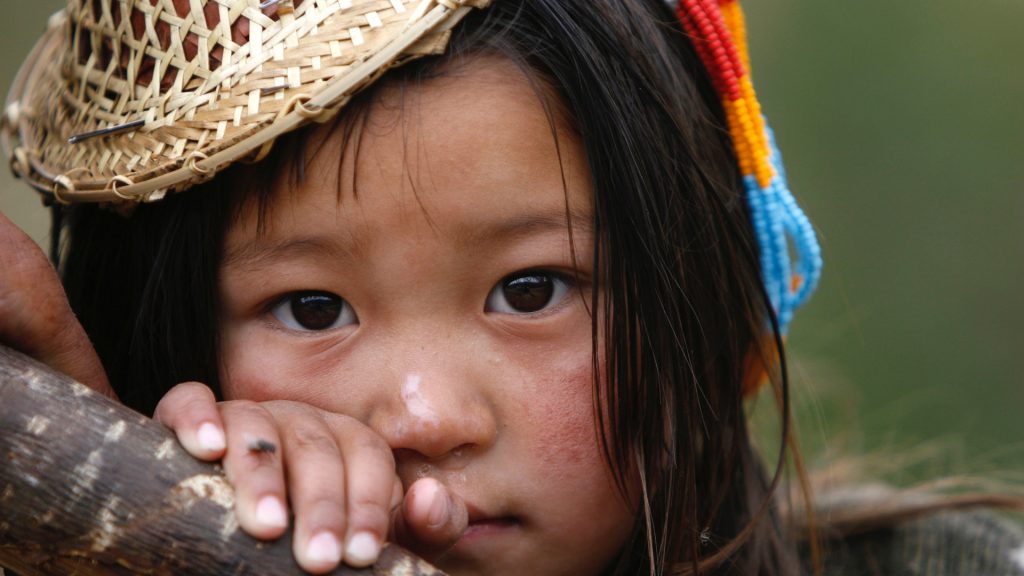
Nature & Cultural delight
- 13 Nights Cultural Tour in Bhutan
- Special Discounts available
- USD 4395 onwards
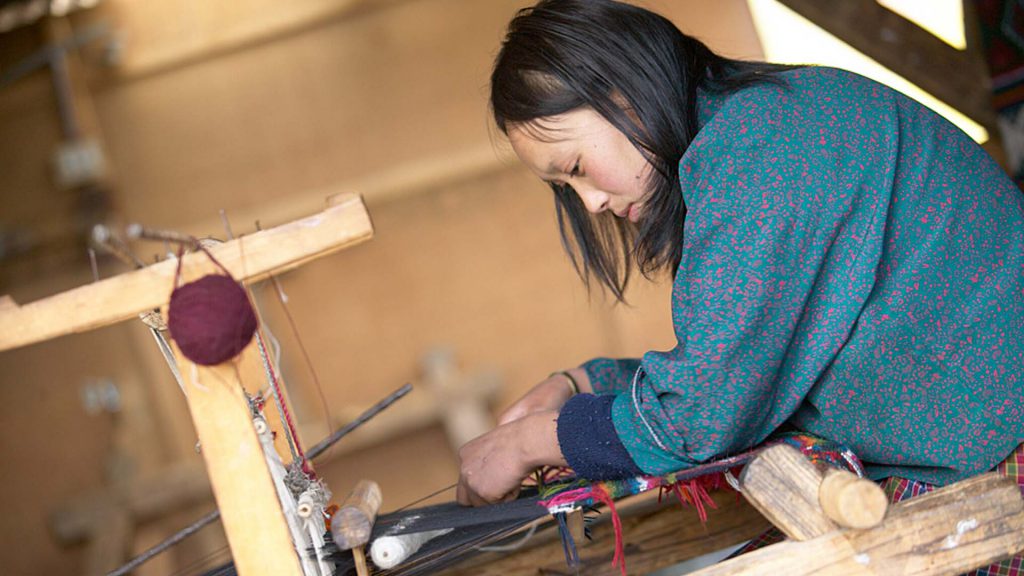
Unveiling Bhutanese Textile
- 15 Nights Bhutanese Textile Tour
- Special Discounts available
- USD 5065 onwards
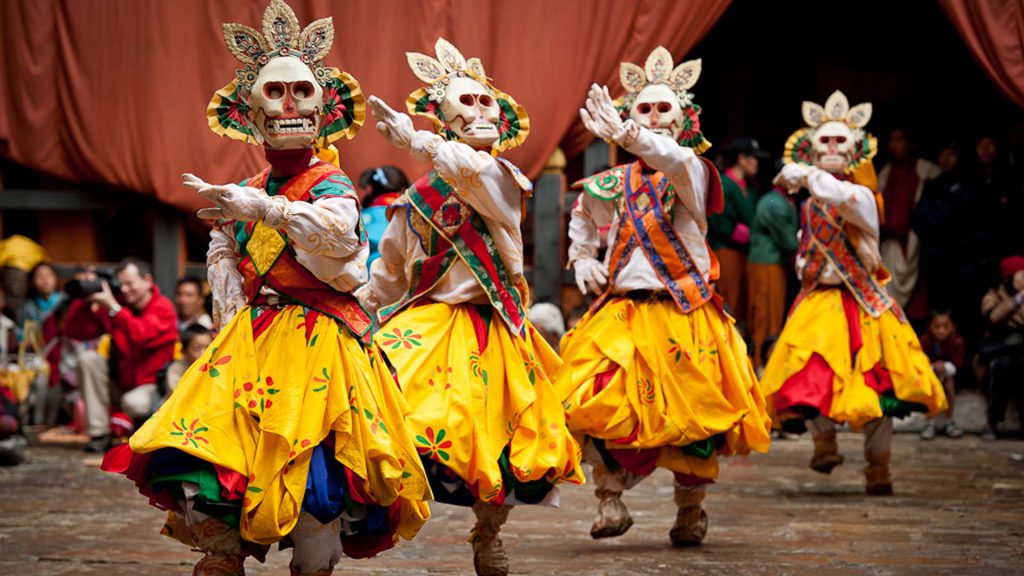
Thangbi Mani Festival Tour
- 10 Nights Bhutan Festival Tour
- Special Discounts available
- USD 3390 onwards
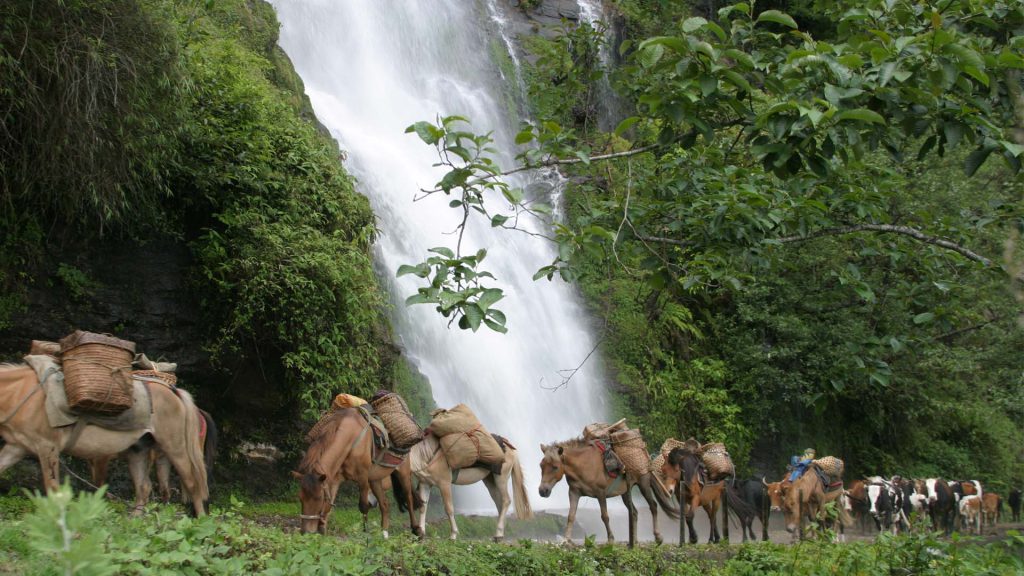
The Dagagla Ancient Trail
- 14 Nights Thimphu to Dagana Trek
- Special Discounts available
- USD 4730 onwards
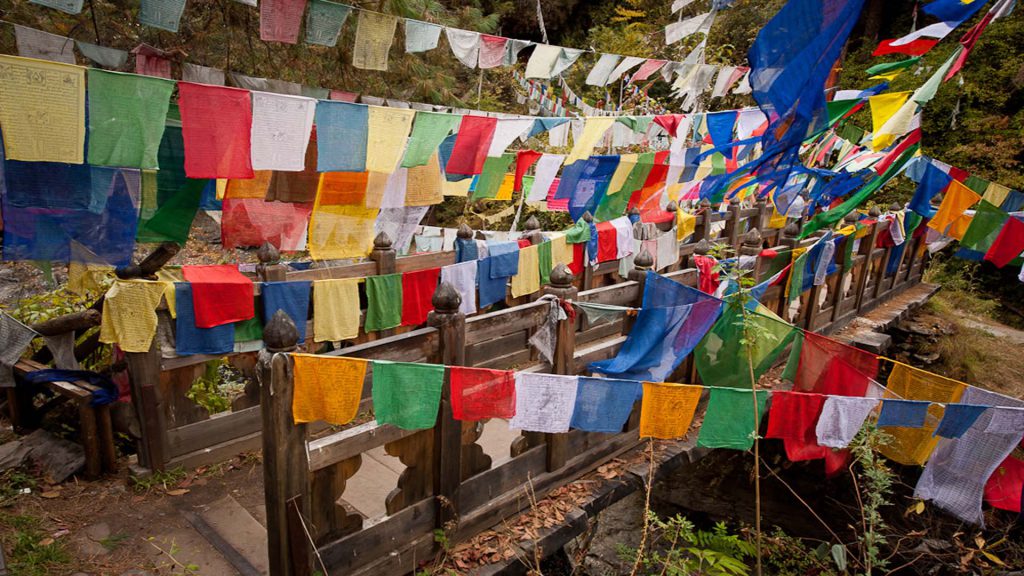
A Photo Journey in Bhutan
- 8 Nights Bhutan Photography Tour
- Special Discounts available
- USD 4070 onwards
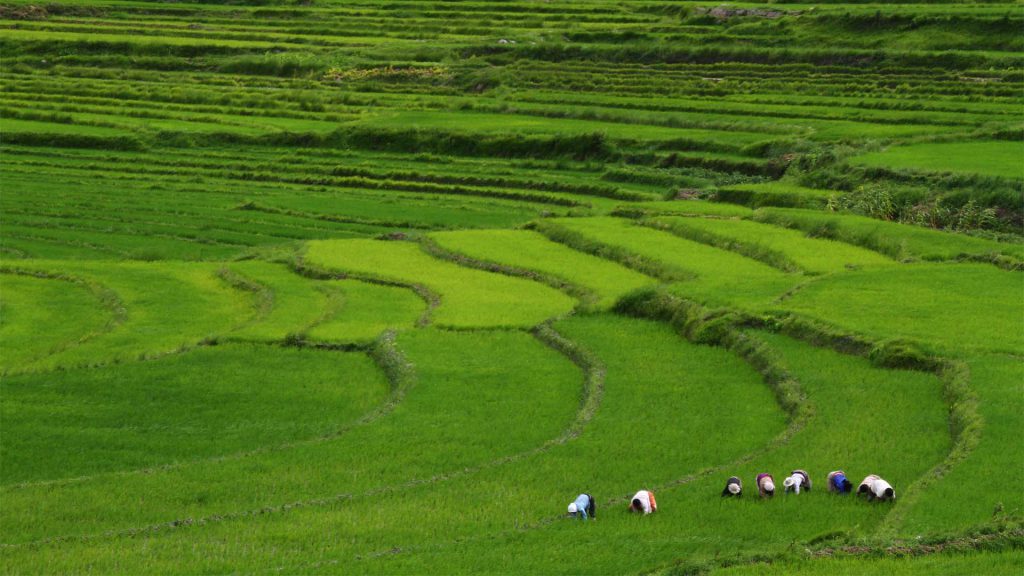
Happiness and Hikes
- 6 Nights Rejuvenating Bhutan Travel
- Special Discounts available
- USD 2050 onwards
